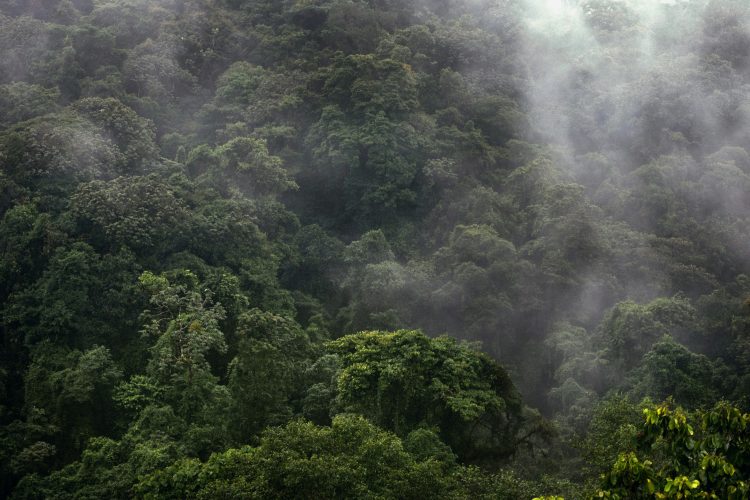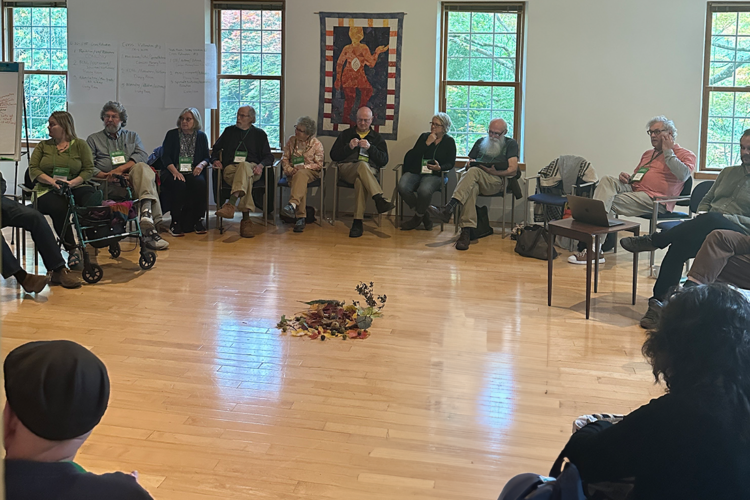Reflections on the People’s Climate March: Prelude to the Mother of All Movements?
Reflections on the People’s Climate March: Prelude to the Mother of All Movements?

Geeta and I joined the amazing People’s Climate March in New York in September 2014. We marched with Quakers amongst the faith communities, a cohort with a pre-march estimate of 10,000, rivaling Labor as the biggest bloc. Over 600 Quakers showed up, positioned next to the Unitarians. This march, carefully planned and brilliantly executed, was billed as a watershed event for the climate movement. Whether or not this will prove to be the case, we will know soon enough. As many—including the International Energy Agency—have said, we are now in “decade zero”; it’s now or never. The immediate goal is to sign an international climate treaty under UN auspices at COP 21 in Paris next December to replace the fading Kyoto Treaty.
The careful planning was everywhere evident. The march was led by front-line folk, those already affected by the climate beast: the poor boroughs of NYC, refugees from the Philippines and terrifying typhoon Haiyan and residents of island nations threatened by rising seas—some of whom have already packed their bags, heading for new homes. A “climate train” came all the way from the West Coast, and Florida citizens arrived who are fearing the loss of their communities to rising seas. At the head of the parade were Ban Ki Moon in a march t-shirt and baseball cap, whose initiative to call a climate summit was the inspiration for the march, and France’s environment minister Segolene Royal, impeccably dressed in a tailored business suit, among other dignitaries.
We were joined by people of color, a notable shift from my previous climate actions, including the big march in Washington in February 2013. At the powerful interfaith service later in the day at St. John the Divine, an old associate of Dr. Martin Luther King proclaimed that the civil rights movement would be the “rock” of this ecojustice movement, because the poor and colored would be the first affected by the massive changes underway. In addition to African Americans from North America, many indigenous folk from south of the border were on hand, colorfully dressed and with beautifully crafted signs. The sign art everywhere was eloquent. One Central American native was pulling a little clay-and-wattle kiln, which he told us represented the earth, seeking a delegate’s seat at the negotiating table. Inside was a woman in fetal position.
The large faith contingent was to gather on a side block, joining the march at the appropriate time. We waited well over three hours for this moment to arrive, with those who arrived early for Quaker-style silent worship to bless the effort waiting much longer. The entire march was asked to observe a minute of silence in honor of those who have already lost their lives to climate change. I would say the partial silence lasted less than 15 seconds. Believe me, there is not much silence when 400,000 put on their boots and take to the streets! While we waited, we had prayers and a lot of rallying songs and hymns from the speaker trailer up front. True to form, the Hari Krishnas next to us drummed and danced with such cacophany that the loudspeakers couldn’t dint them. I hope Krishna heard, because we couldn’t. Next to them were middleclass South Asians, also gathered beneath the neat little pennant reading “Hindu.” This was a Big Tent affair, so the mainstream faith communities were joined by groups like ethical humanists, atheists, and “New Thought.”
The march began in Central Park and wound its way through the streets, proceeding right through Times Square, up to 34 Street and 11th Avenue. At one point progress of the march was halted, because the entire route, 80 city blocks, was filled. We were making a statement, amplified by some of our onlookers, including a large group of meditators in a park along the route and the Bard Grad School, who egged the crowd on to huge roars beneath their strategic quarters about eight stories up on 42nd Street near Times Square.
The gargantuan rally coincided with the announcement of fossil fuel divestment by the Rockefeller Foundation, who some speculated may have bankrolled the public relations for the march. Other companies also announced divestment that day. A high official from the World Bank said before the week began that folks were “going to be surprised” by how many corporations and various regional political unions, as well as provinces and municipalities, were lining up behind a carbon tax.
However, on Tuesday, given their chance to answer Ban Ki Moon’s call, national leaders ducked, waiting, as usual, to see what commitments other nations might make. Many on the Left, notably Chris Hedges, dismissed the march as a huge greenwashing stunt (http://www.truthdig.com/report/page2/the_last_gasp_of_climate_change_liberals_20140831) by corporations, orchestrated by the U.N., and the lack of commitment on Tuesday gave these arguments a depressingly prophetic air.
But I am going to have to cast my lot with the “last gasp” liberals and Naomi Klein, a brilliant radical who refuses to cut Hope off at the knees. Though she largely agrees with Hedges’ analysis of the problem, her sense of the solution diverges from his. Hedges sees the march as a “prelude” to direct action and “revolution” against the international capitalist empire, while Klein sees the beginning of a broad movement with such numbers and momentum that it cannot be denied by powers that be. You can read more about Klein’s take at http://dandelionsalad.wordpress.com/2014/09/21/the-talk-before-the-walk-bernie-sanders-bill-mckibben-naomi-klein-kshama-sawant-chris-hedges-brian-lehrer/.
I am one small nexus of that movement, and I agree with economists who convincingly argue for an international carbon tax, bound by a treaty which nevertheless allows individual sovereign nations the option to use the dividends as they choose best. The 11th hour is past. We have a small window in which to build the movement to awaken the political will to create a strong, binding international treaty. The proposed Paris Protocol would take force in 2020, right at the end of our current “decade zero.” This is indeed a midnight hour’s decision, and it may be too late. But it is the only moment we have.
*This post was original published on Bob’s blog at http://ecospirit.blogspot.com/2014_09_01_archive.html.

